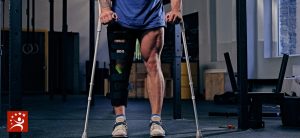Even though your pelvis is a strong and stable bone structure, it can break. The pelvis protects many important nerves, blood vessels, and organs that can also be damaged and cause serious complications, including chronic pain, impaired mobility, sexual dysfunction, and deep vein thrombosis (DVT), a type of blood clot. Unstable pelvic fractures can be severe and need immediate medical attention from the most skilled, experienced orthopedic specialists like those at the Colorado Center of Orthopedic Excellence in Colorado Springs, Colorado. You can trust they’ll know exactly what to do.
OVERVIEW
Pelvic fractures, also known as insufficiency fractures, are osteoporotic fractures of the pelvis and are often overlooked or misdiagnosed. Anyone can experience a pelvic fracture at any age. Mild pelvic fractures are more common in older people because they are more likely to have bone-weakening disorders such as osteoporosis. Severe pelvic fractures are most common in people aged 15 to 28 years. Under the age of 35, men are more likely to experience a pelvic fracture, while over the age of 35, women are more likely to experience a pelvic fracture. Around 94% of pelvic fractures in people over 60 are due to osteoporosis, which weakens the bones and increases the risk of fractures.
ANATOMY OF THE PELVIS
The pelvis is a butterfly-shaped-shaped structure at the base of the spine. The pelvic bones include the sacrum (the large triangular-shaped bone at the base of the spine, the coccyx (tailbone), and the hip bones, which include the ilium, ischium, and pubis which are separate in childhood but fuse as one gets older. These three bones meet to form the acetabulum—the hollow cup that serves as the socket for the ball-and-socket hip joint. Bands of strong connective tissues called ligaments join the pelvis to the sacrum, creating a bowl-like cavity below the rib cage. Major nerves, blood vessels, and portions of the bowel, bladder, and reproductive organs all pass through the pelvic ring. The pelvis protects these important structures from injury and also serves as an anchor for the muscles of the hip, thigh, and abdomen.
WHAT IS A PELVIC FRACTURE?
There are multiple ways to classify pelvic fractures. A surgeon will use a classification system to identify the patterns of the fractures based on the direction in which it was broken and the amount of force that caused the injury. These classifications include:
- Anterior to posterior compression injury: a break going from front to back
- Lateral compression injury: a break going from one side of the body to another
- Vertical shear injury: a vertical break that pushes one part of the bone up toward the head
In addition to being described by the specific fracture pattern, pelvic fractures are often described as “stable” or “unstable” based on how much damage has occurred to the structural integrity of the pelvic ring. In a stable fracture, the pelvis has one break point in the pelvic ring, limited bleeding, and the bones are staying in place. In unstable fractures, there are two or more breaks in the pelvic ring with moderate to severe bleeding. Both stable and unstable fractures can also be divided into closed fractures, in which the skin is not broken, and open fractures, where the bone fragments stick out through the skin.
CAUSES
Most pelvic fractures happen from high-impact events such as car or motorcycle accidents or falling from a significant height. In people with osteoporosis, even a fall from a standing position or during a routine activity—such as getting out of the bathtub or walking down the stairs, can result in a pelvic fracture. People with a history of falls, especially older people, are more likely to experience another. Although not as common, someone who is playing a sport could get a pelvic fracture known as an avulsion fracture. This happens when a tendon or ligament tears away from the bone to which it’s attached. When the tendon or ligament tears away, it takes a small piece of bone with it.
SYMPTOMS
- Pain in the groin, hip, and/or lower back
- More intense pain when walking or moving legs
- Having a difficult time standing
- Numbness or tingling in the groin area or legs
- Pain in the abdomen
- Having a difficult time urinating
NON-SURGICAL TREATMENTS
Treatments for mild and stable pelvic fractures in which the bones aren’t displaced usually don’t involve surgery. Treatment can include:
- Rest
- Crutches, a walker, or, in certain cases, use of a wheelchair to avoid bearing weight on the legs
- Non-steroidal over-the-counter pain medications such as acetaminophen
- Blood thinners (anticoagulants) to reduce the risk of having blood clots form in the veins of the legs and pelvis.
WHEN IS SURGERY INDICATED?
The decision whether to operate is made on several factors, including the stability, how far the fracture has moved, and whether there are any other injuries present. The two most common methods of treating a pelvic fracture are:
- External Fixator: a metal frame is attached to the front of the pelvis on the outside of the body. This is to correct the position of the bones and prevent movement of the injury.
- Internal Plates and Screws: these go directly against the bone to correct the position and prevent movement.
GETTING THE RIGHT DIAGNOSIS. GETTING THE RIGHT DOCTOR.
People who experience a severe pelvic fracture from a high-impact accident often have other injuries or internal injuries caused by the pelvic fracture that will also need to be treated. In these cases, the success in treating the pelvic fracture depends on the skill of the treating surgeon. The orthopedic specialists at the Colorado Center of Orthopedic Excellence in Colorado Springs, Colorado, have extensive training and experience in treating pelvic fractures. X-rays, CT scans, and MRIs can help your surgeon determine the extent of your injury and the best plan of treatment. They will watch closely for bleeding in your abdomen, as that is something possible with some pelvic fractures. They also understand the additional complications that can likely affect older adults with an incorrect diagnosis and treatment that causes the fracture to heal incorrectly. Quality of life can decrease not just in older patients but in anyone having to recover from a pelvic fracture. At CCOE, they don’t just care for you; they care about you and getting you back to doing the things you love. Schedule your appointment today if you are suffering from a fractured pelvis.








